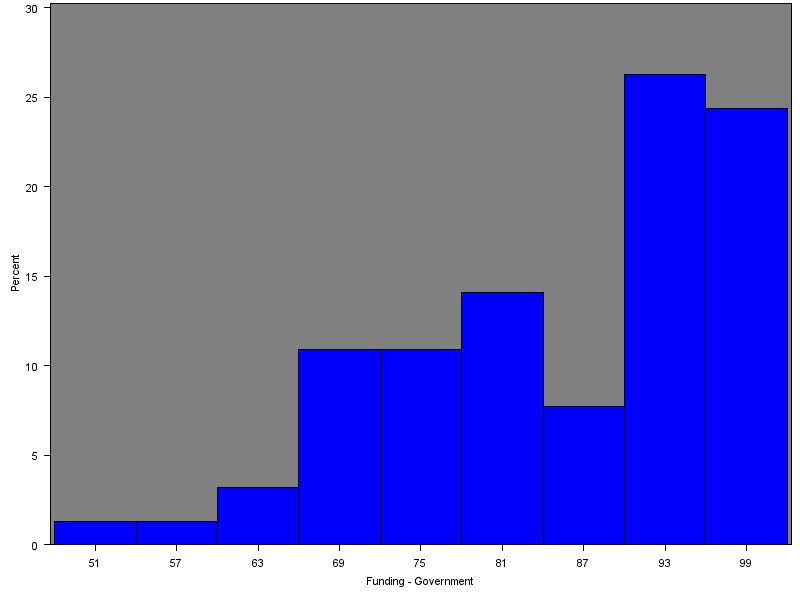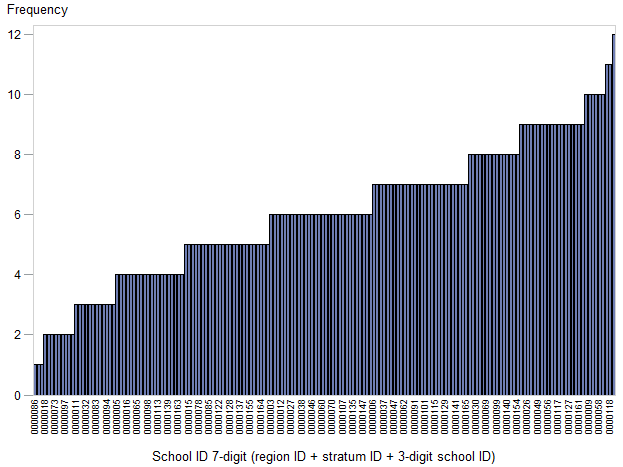T15 Overview
Contents
Project Introduction
Introduction of PISA
The Programme for International Student Assessment (PISA) is a international survey which aims to evaluate education systems worldwide by testing the skills and knowledge of 15-year-old students. To date, students representing more than 70 economies have participated in the assessment. The most recently published results are from the assessment in 2012.
Around 510,000 students in 65 economies took part in the PISA 2012 assessment of reading, mathematics and science representing about 28 million 15-year-olds globally. Given PISA is an ongoing triennial survey, countries and economies participating in successive surveys can compare their students' performance over time and assess the impact of education policy decisions.
Since the year 2000, every three years, fifteen-year-old students from randomly selected schools worldwide take tests in the key subjects: reading, mathematics and science, with a focus on one subject in each year of assessment. Students take a test that lasts 2 hours. The tests are a mixture of open-ended and multiple-choice questions that are organized in groups based on a passage setting out a real-life situation. A total of about 390 minutes of test items are covered. Students take different combinations of different tests. The students and their school principals also answer questionnaires to provide information about the students' backgrounds, schools and learning experiences and about the broader school system and learning environment.
Project Introduction
Our project makes use of PISA data collected during the latest survey of 2012 with regards to Singapore. The aim of project is to explore the relationship between computer use in school and secondary-school student performance in reading and mathematics. Building on the current international work done by PISA, our project brings the analysis to Singapore national level and studies various aspects of student performance relative to their access to computer in and outside of school, in order to provide insights for education policy makers of Singapore Ministry of Education (MOE).
Business Problem
The Ministry of Education (MOE) of Singapore collects and analyses data from schools island wide to continually improve policies and practices in Education. However, most of this data are not publicly available for research and analysis by those outside the Ministry. Hence, the sponsor seeks to gain insights about education in Singapore from the publicly available data collected by the OECD through their “Programme for International Student Assessment” (PISA) survey. The PISA is a triennial international survey which aims to evaluate education systems worldwide by testing the skills and knowledge of 15-year-old students. The most recently published results are from the assessment in 2012.
Project Objectives
Business Objectives
The project aims to investigate effect of various personal and environmental factors on the cognitive abilities of secondary school students, such as their family background and academic environment. The key findings can be served as insights for policy makers and educators to improve current practices to help improve the learning environment and process.
Analytical Problems
To achieve the above business object, the following questions need to be addressed
- In terms of school resource allocation:
- How are resources in schools allocated to different aspects, such as teachers, computers, network, learning facilities and activities?
- What is the outlook of student-teacher relationship and how might it affect student’s emotional well-being at school?
- What are the prominent problems schools in Singapore are facing and their relationship with student academic performance?
- Does student-teacher ratio matter to student well-being and teacher morale? Overall does it affect student performance in school?
- In terms of student profile
- Is student performance correlated with their socio-economic status and parents’ education level?
- Is student performance affected by emotional well-being or vice-versa?
- What lifestyle factors might contribute to students’ emotional well-being in school?
Data
Data Preparation
Text data is retrieved from PISA2012 database (https://pisa2012.acer.edu.au/downloads.php). The data provided comprises of results of 5 questionnaire: student, school, parent, cognitive item and score cognitive item. Of which, only Singapore data is of interest.
Format of text data is not readily readable by SAS or any analytics tool. Each record is stored as a long sequence of characters, where a fixed length of character would represent a value. To convert the data into format that SAS Enterprise Guide can read, a program is created in SAS to read the character sequences, separate them into smaller parts and assign to appropriate attributes.
After which, only data for Singapore is selected and exported to a separate set of tables for further analysis.
Tables of data to be used in the analysis
- Student questionnaire data (stu): this table contains student demographic information, parents’ education, interest in school subjects, engagement with activities outside school, access to information communication technology (ICT), familiarity with academics concept and sense of belonging in school.
- School questionnaire data (sch): this table contains information about school sources of funding, size of student population, staff headcounts, availability of ICT for student and teacher use, shortage of resources (if any), co-curricular activities, parent participation, teacher morale and learning hindrance (if any).
- Score cognitive item data (cogs): this table records the score of students subjected to PISA tests in Reading, Mathematics and Science. Since student grades are not available to us as far as the scope is concerned, we will use this table as a measure for student academic performance
Integrating tables to support more queries
- SchoolID and StudentID can be used to link the 3 tables above. This integration is crucial in discovering possible correlation between various aspects of school environment and student performances, which offers valuable insights to education policy makers such as MOE and school management.
Preliminary Findings
- Public secondary schools in Singapore receive different degrees of fundings from Singapore government
- The number of scoring students differs significantly across secondary schools
- Secondary schools in Singapore does not allocate resources efficiently by PISA standards, with a mean index of -0.36797 (range is -0.80 to 9999.0). There is also a slight negative correlation between percentage funding given by government and index of school responsibility for resource allocation.
From Fig 1 above, we observe that there seems to be a significant discrepancy in government funding provided to the public schools. This is a potentially useful observation, as differences in funding will affect the amount of resources available to the schools and hence contributes to different learning environments and opportunities available to students. Student performance may be affected by such difference in allocation of education resources.
From Fig 2, we observe that scores of students differ significantly across secondary schools. In addition, secondary schools in Singapore do not allocate resources efficiently by PISA standards, with a mean index of -0.36797 (range is -0.80 to 9999.0). There is also a slight negative correlation between percentage funding given by government and index of school responsibility for resource allocation.
Methodology
Frequency Analysis
- To examine resources given to different secondary schools in Singapore
- To understand the purposes for which school resources are used
Correlation Analysis
- To examine the extent that resource availability in schools affect student performance/ To evaluate if problems of shortages in school (teaching staff, facilities) are associated with low performance
- To examine if family background and socio-economic status are linked to student performance
- Is emotional well-being necessarily associated with good performance?
Tools
Main tool for analysis is SAS Enterprise Guide. In particular, the project makes use of features such as Data exploration, Correlation Analysis, Frequency Analysis, Regression, Sorting and Filtering, Query Builder, Table Analysis and Graph functions.
Scope of Work
The scope of this project is largely determined by the available data from the PISA2012 survey, specifically for Singapore. The survey takes sample from 172 secondary schools in Singapore, each with randomly selected 35-40 students. Data collected during the survey includes family background, parents education, student possession at home, school funding, staff headcounts and profile, facilities and prominent issues (truancy and shortage of resources). A 2-hour test was conducted to measure students’ competency in Mathematics, Science and Reading. Overall, the PISA2012 survey results serve as a rich source of data to conduct our analysis for the education landscape in Singapore.
At the end of our project, we aim to deliver a storyboard of all key findings from the PISA2012 data and possible recommendations for improved school resources management and practices based on insights from our analysis.


